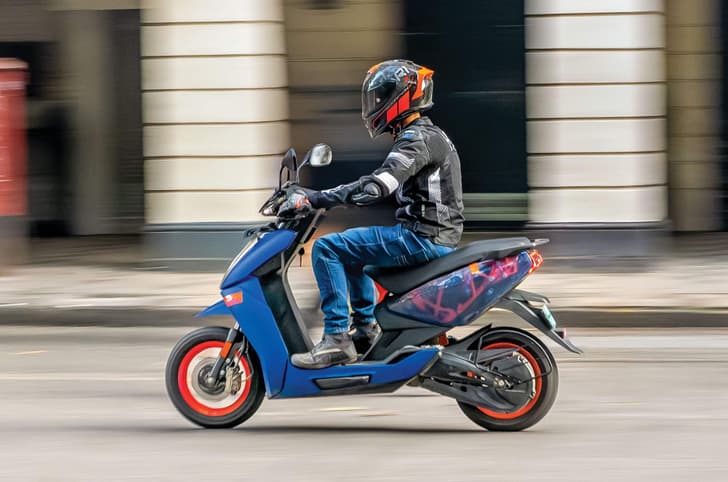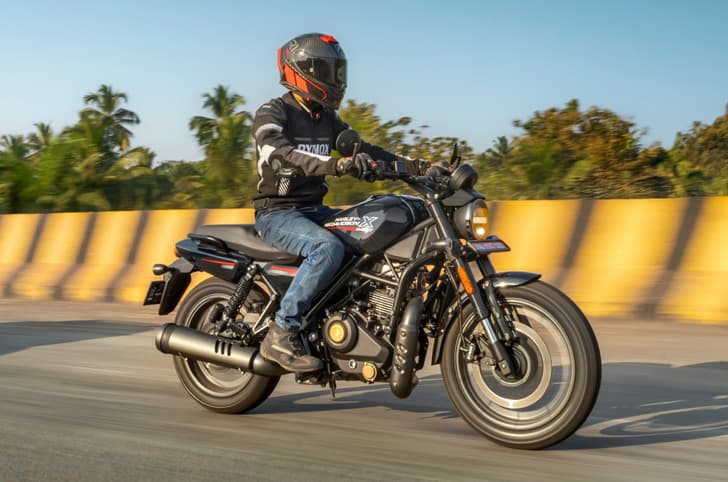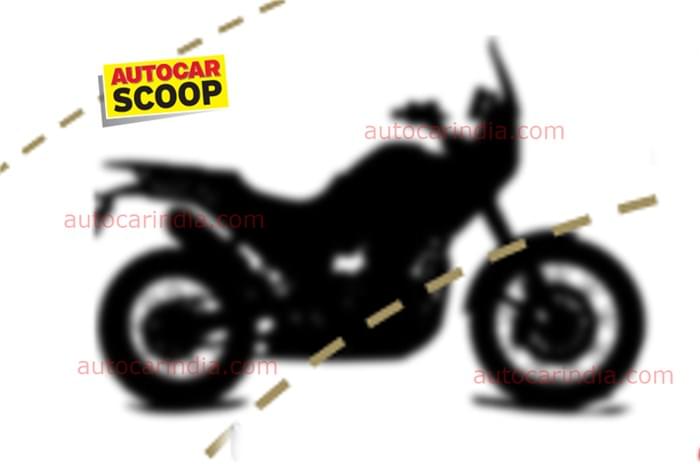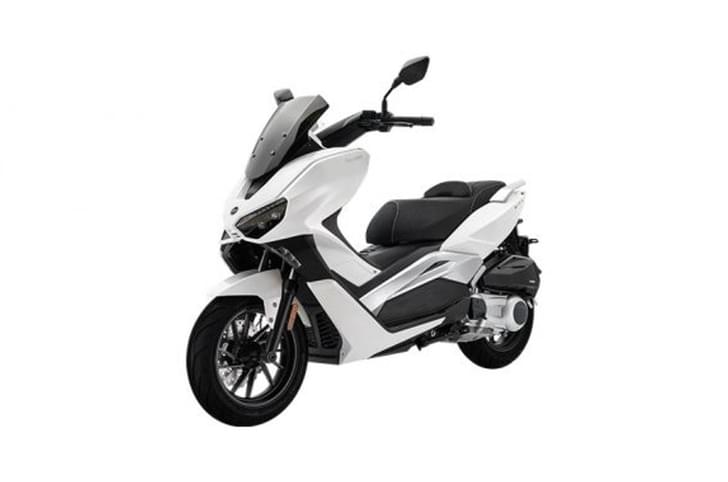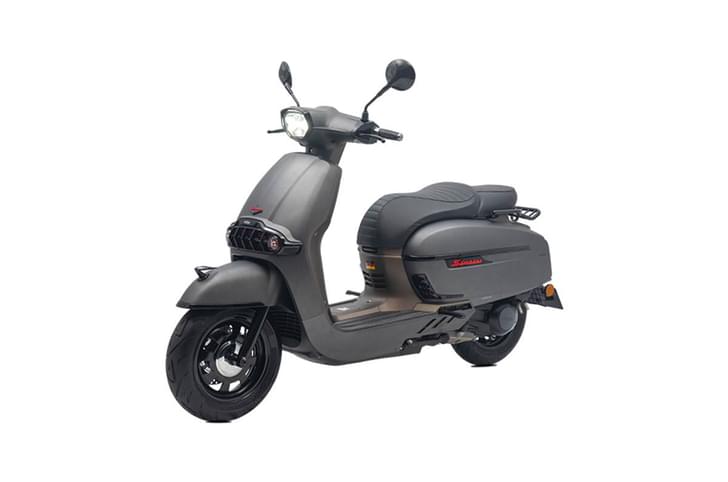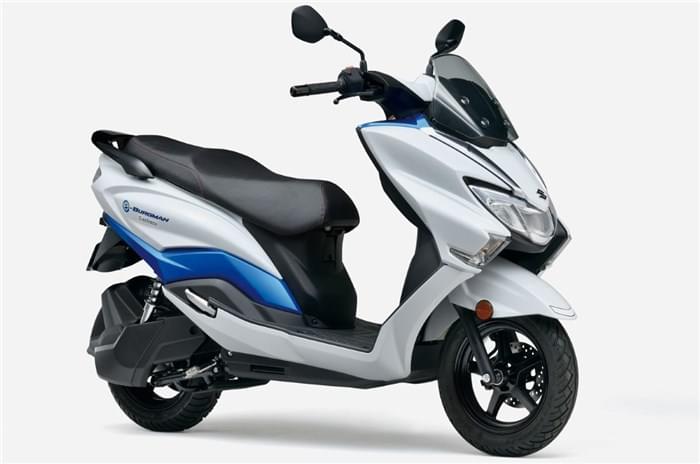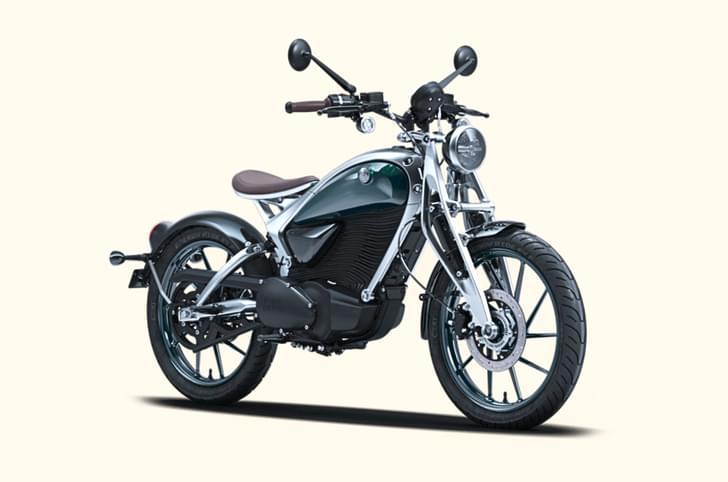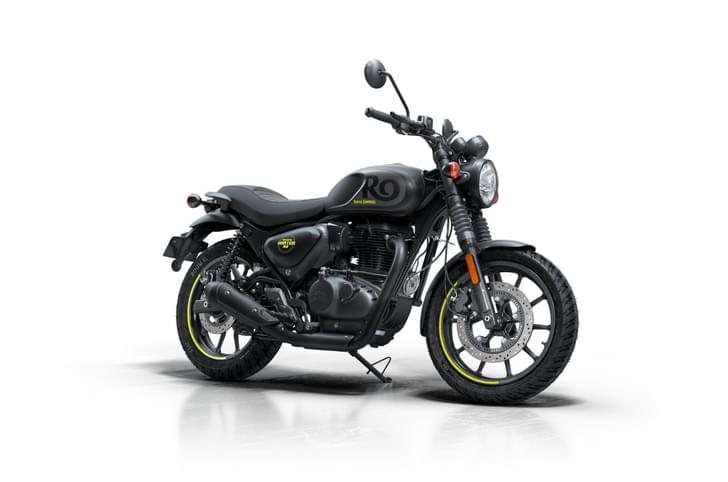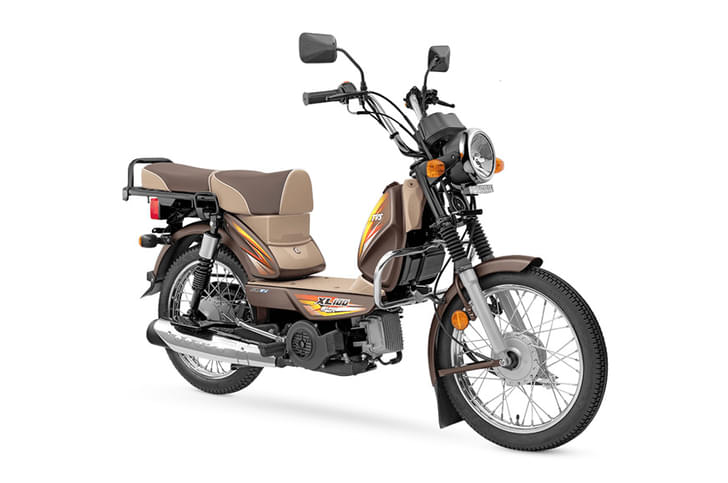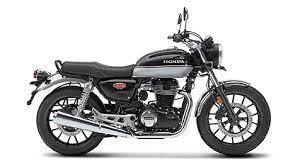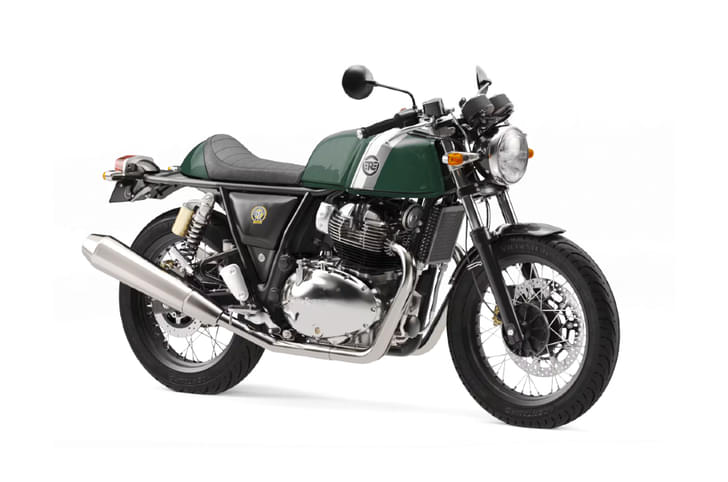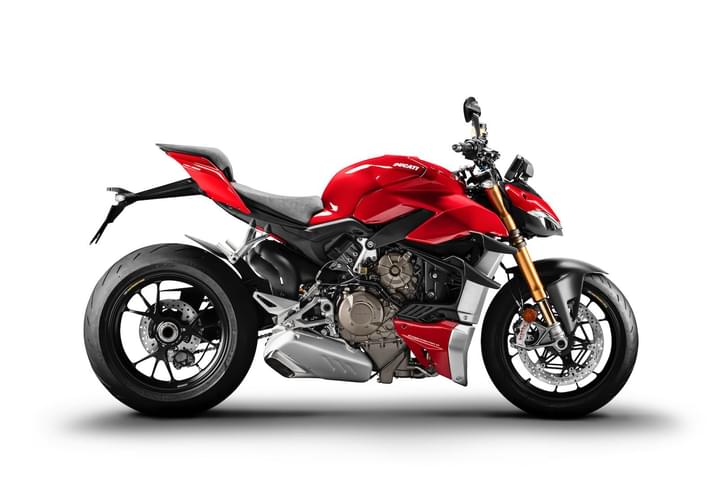I don’t blame you if you if just went ‘ SW-what?’. The Italian brand is little known in our part of the world although it has a respectable history, dating back to the ‘70s, in the field of trials and enduro motorcycles. The brand was resurrected in 2014 with China-based Shineray emerging as its financial backbone; the Jawa 350 OHC, sold internationally, came with a Shineray-supplied engine, too. SWM’s motorcycles, though, are produced in Italy, at the former Husqvarna factory. Apart from Husqvarna’s plant, SWM also inherited a bank of engines as well as most of its engineers. And the Superdual 650 T you see here, in fact, started life as a Husqvarna TE610. SWM took the Husky as a base point and added fuel-injection, an electric starter, some electronics and also made it Euro IV-compliant, in addition to making other smaller changes to the mechanicals. Okay, so now that the history lesson is over, let’s move on to what the bike is like to ride in India.
For one, the Superdual 650 T has presence. It’s tall and its adventure-ready fenders give away its intentions in an instant. More than a handful of people I met over the course of a two-day ride thought the headlight resembled the one on the KTM Duke 200 and, to some comic relief, I had a few passing motorcyclists whiz up to me enquiring if this was the KTM 390 Adventure prototype (cue the red temporary registration plate). It’s therefore safe to conclude that the Superdual is a head-turner, at the very least.
Step closer to the bike and the less appealing details begin to emerge. The speedometer is a digital unit but the display is small and the readouts are basic – speed, revs, an odo and trip meter, and not much more. The 18-litre plastic fuel tank is slim but the wide protrusions that emerge from the knee-recesses onwards come in the way of gripping the tank with your knees when you stand up and ride. The centre panels have clearly been designed independently of the rest of the motorcycle, and they certainly don’t belong on a motorcycle of this price. And while the switchgear is decent, it’s fairly ordinary; the fog light switch looks like an afterthought, at best. The seat is slimmer than on the usual fare of adventure motorcycles and the rider’s perch has a sewn-on grip patch, but the pillion seat is long and laughably narrow and is best reserved for short spins or for people you don’t like very much.
The T variant (a step-up from the base Superdual) is shod with a few standard accessories, namely the fog lights, engine guard, skid plate, knuckle protectors and the luggage rack, for all of which Motoroyale is asking for a premium of 50k over the base motorcycle – a fair price, surely. The Givi panniers cost an extra Rs 63,991 however. On the whole, then, the Superdual is decently kitted out for the wild outdoors, but can it actually take you there? If the pictures haven’t given it away already, the answer is ‘yes’, so let’s get there, eventually.
The commanding riding position sets the tone for off-roading – the handlebar is wide, the pegs (with removable rubbers) are positioned high up and there is nothing in the riding geometry that creates stress. The seat height of 898mm is not for everyone, although the narrow seat width means getting your feet on the ground is easier than on some bikes with slightly lower seat heights. With 180mm of ground clearance on offer and an overall tall and slim stance, the Superdual feels different to the conventional crop of adventure tourers such as the Kawasaki Versys and the Suzuki V-Strom 650 XT. This is clearly more a dirt bike for the real world than a road bike that can also venture off-road.
A patient dab of the electric starter button (it can take really long presses sometimes, but didn’t fail once) brings to life the 600cc, liquid-cooled, DOHC, single-cylinder motor, and the subsequent roar that emerges from the two exhausts is more ‘big dirt bike’ than ‘adventure tourer’. The throttle feels light enough and responds to blips without lethargy, and the gears slot in quickly and with a nice mechanical ‘thud’. Depending on how you like launching your motorcycle, you end up either with a lot of wheelspin or a monstrous wheelie and, from this point onwards, the Superdual comes into its own. With 54.3hp and 55Nm of torque at hand, the Superdual’s output figures aren’t exhilarating but they seem well-suited to the task – of mainly mud-plugging and chugging a few hundred highway miles in short bursts, that is. What’s most likeable about the motor is the tractability. It’s responsive in every one of its six gears and it’s quick to gather steam at every point in its rev range. There really is something delightful about riding a big, single-cylinder motorcycle, a breed of motorcycles that has evaded India (Royal Enfields aside, but they don’t compare). Today, the Superdual classifies as an almost-extinct species, with emission norms (not entirely to blame, but to a large extent) forcing manufacturers to take the twin-cylinder route.
On the flipside, there are vibrations almost at all revs, especially at the footpegs. This intensifies and spreads out to other contact areas – like the handlebar and tank – as the revs shoot up, although it’s only the post-5000 rpm vibes that are seriously unruly. That sore point aside, the Superdual’s motor is a thoroughly enjoyable one. Acceleration is enjoyably quick, and you can choose to cruise at 100kph in sixth gear, with the revs around the 3200rpm mark. The lack of any electronic rider assists is noteworthy but it doesn’t impact the Superdual’s performance in any way. Everything is naturally controllable in a charmingly analogue manner and not long after you start riding, the tall gearing and even spread of torque begins to get addictive. This motorcycle has ‘India’ written all over it, in terms of its usability – and that’s a big compliment.
This only gets better when you begin to look beyond the engine. The Superdual rides on a 19/17-inch (front/rear) wire-spoke wheel combination and is shod with block-pattern Metzeler Tourance rubber, which provides ample grip on the road and the right amount of traction off it. The single 300mm brake disc up front is ample, too, although the fork drive that accompanies hard braking can take a while getting used to. Dual-channel ABS is standard and, thankfully, rear ABS can be disengaged. What brings the package together, though, is the semi (lower half) double cradle tubular steel frame, which has inherently agile mannerisms. Stability is on point, too, although it lacks the squat, planted feel of bigger, heavier bikes like the V-Strom and the Versys at very high speeds. Suspended on a 45mm upside-down fork and a monoshock, the chassis is agile and responsive, and on the move, it does well to camouflage the Superdual’s 197kg kerb weight. The rebound damping-adjustable fork is a product of China-based FastAce while the preload-adjustable monoshock comes from Sachs.
On twisty tarmac, the Superdual isn’t most intuitive given the rounded profile of its tyres – it tips into lean angles rather dramatically and with very little progression – so I found it safest to corner it dirt-style, sitting on the outside of the bike and with a leg sticking out. You can ride it as you would a conventional motorcycle, too, but it’s a matter of subjective safety perceptions and comfort, I suppose. The suspension is firm at low speeds but that’s because it’s meant to absorb more off the road and at higher speeds. And it does! And how! Pardon the liberal use of exclamations but the Superdual really is the closest you’re going to get to a street-legal dirt bike.
Off the road, the Superdual is simply fantastic and is a big step ahead of what conventional adventure tourers can achieve. It has the limbs of a pedigreed enduro motorcycle and you have the right amount of feedback from either end, which keeps things predictable and easy to control. There’s ample leverage from the handlebar and as long as you’re comfortable with the magical world of dirt riding, the Superdual is just about unstoppable. This is a seriously capable bike that can scale pretty impossible-looking gradients if you please and the best bit is, its abilities don’t come at the expense of user-friendliness. Unlike most recent additions to the adventure motorcycle world, the Superdual does dominate the terrain, but as a rider, you feel enabled and, simultaneously, protected. It can take you just about anywhere you want to go and I can tell you from experience that it has, plausibly, the river-crossing capability of a small boat. It’s also capable of flight, and the way it lands (always on the rear wheel) with absolutely no repercussions gives away the robustness of its underpinnings, apart from its deep-rooted enduro genes, that is. The Superdual, beneath its layer of road usability, is essentially a dirt bike with a big heart and that’s impossible to not love.
The romance does meet an unfortunate end, however, and it’s the price tag that’s the big culprit here. The Superdual is so enjoyable, just so much fun, that you forgive it almost all of its shortcomings – the vibes, underwhelming plastics, slightly flawed off-road ergonomics and inadequate pillion seat, to name a few. But given that it costs you a fat lump of money, these are things you can’t (and shouldn’t) take lightly. To take an objective stand, the reality is that the Superdual feels a generation old as a motorcycle. This is not necessarily a bad thing from a riding pleasure point-of-view, but a motorcycle of this class and price needs to do more than just make your social media posts look good. This segment is all about value-for-money, and right now, the Superdual 650 T isn’t quite up there – at least not enough to please the rational thinkers amongst you.
To blame for its Rs 7.3 lakh (ex-showroom) price tag is the fact that it’s an SKD (semi knocked-down) import from Italy – Thai imports are vastly cheaper – and I hope, with my fingers crossed, that Motoroyale finds the motivation to produce this motorcycle in India, thereby making it cheaper. Sure, you should also consider that SWM is neither as big a brand as Suzuki or Kawasaki and that it’s yet to set up a half-decent service base across the country (the latter should happen over the next few months), but as far as the motorcycle itself is concerned, you’re in for a treat. It gives me some amount of heartache to distance myself from the Superdual primarily due to its price tag, because I haven’t smiled this much within my helmet in a long, long time. Over to you, Motoroyale.









